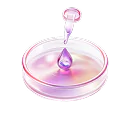Giving birth to a child can be an exciting yet challenging journey. One of the most crucial aspects of this process is understanding your fertile window, which is the time during your menstrual cycle when you are most likely to get pregnant. Accurately identifying and tracking your fertile days can increase your chances of conception. This blog is a comprehensive guide to the fertile window, including its definition, importance, and various methods to track it effectively.
What is the Fertile Window, and Why is it Important?
The fertile window is the days during a female’s menstrual cycle when she is most likely to conceive. This window typically lasts about six days, starting five days before ovulation and ending on the day of ovulation. During this time, the chances of conception are highest due to viable sperm and a released egg.
Understanding and accurately tracking the fertile window is crucial for couples trying to conceive. By timing intercourse during this period, the likelihood of successful fertilisation increases significantly. Additionally, knowledge of the fertile window can be beneficial for couples seeking to avoid pregnancy or those undergoing fertility treatments.
How Long does the Fertile Window Last?
The fertile window typically spans six days, with the highest likelihood of conception occurring on the day of ovulation and the five days leading up to it. The fertile window’s length can vary slightly from woman to woman and cycle to cycle.
The lifespan of the egg and sperm determines the fertile window. Once the egg is released from the ovary during ovulation, it can survive up to 24 hours. Meanwhile, sperm can survive within the female reproductive tract for up to five days. This overlap creates the fertile window during which conception is possible.
Related Read: Tips for How to Increase Ovulation Naturally
Ovulation Period in Women and its Role in Fertility
Ovulation is a crucial event in a woman’s menstrual cycle and plays one of the most essential roles in fertility. During this phase, one of the ovaries releases a mature egg. This egg moves down the fallopian tube in the direction of the uterus. If the egg encounters viable sperm during this journey, fertilisation can occur, leading to pregnancy.
Ovulation occurs about fourteen days before the start of the next menstrual period in a 28-day cycle.
Suggested Read: Menstrual Cycle and Fertility
Key Signs of Ovulation
While ovulation is an internal process, the body often signals the fertile window. Here are some common signs of ovulation:
Basal Body Temperature (BBT) Changes
Basal body temperature (BBT) is the lowest temperature the body attains during rest or sleep. During the menstrual cycle, a woman’s BBT typically rises slightly (0.5°F to 1°F or 0.3°C to 0.6°C) after ovulation due to the release of progesterone. Monitoring and charting BBT can help identify the ovulation day and the fertile window.
Suggested Read: Triphasic BBT Chart Causes
Cervical Mucus Changes
The consistency & appearance of cervical mucus may change throughout the menstrual cycle. As ovulation approaches, the mucus becomes clearer, slippery, and stretchier, resembling raw egg whites. This fertile cervical mucus provides an optimal environment for sperm survival and movement, aiding conception.
Suggest Read: Cervical Mucus to Predict Ovulation
Ovulation Pain
Some women may experience mild cramping pain or a dull ache in the lower abdomen during ovulation, known as mittelschmerz. This pain is typically brief and harmless, lasting a few hours to a day or two.
Increased Libido
Many women report an increased sex drive or libido around the time of ovulation. This natural phenomenon is believed to be influenced by hormonal changes, encouraging reproductive behaviour during the fertile window.
Breast Tenderness
Any fluctuation in hormonal levels during ovulation can cause breast tenderness or swelling in some women. This symptom may persist until the start of the next menstrual period.
Changes in Cervical Position
During ovulation, the cervix (the lower part of the uterus) becomes softer, higher, and more open or dilated. These changes can be detected through self-examination and may indicate a fertile window.
Suggested Read: Uterine and cervical problems that lead to infertility
Light Spotting or Discharge
Some women may experience light spotting or a small amount of pinkish or reddish discharge around ovulation. These symptoms are often harmless and can be a sign of ovulation.
Increased Energy Levels
Many women report feeling more energetic and alert during the ovulation phase of their cycle. This may be due to hormonal changes impacting mood and energy levels.
It’s important to note that not all women experience these signs, and the intensity of symptoms can vary based on an individual’s physical condition & cycle to cycle. Tracking multiple signs can provide a more accurate picture of the fertile window.
Methods to Track Fertility
Various methods are available to help track the fertile window & increase the chances of conception. Some of the most commonly used methods include:
Calendar Method
The calendar method (rhythm method) involves tracking menstrual cycles and predicting ovulation based on cycle length. This method assumes that ovulation occurs fourteen days before the start of the next menstrual period in a 28-day cycle. However, it’s important to note that cycle lengths can vary, making this method less reliable for some women.
Ovulation Predictor Kits (OPKs)
Ovulation predictor kits (OPKs) are urine tests that detect the increased levels of luteinising hormone (LH) in the body, which occurs 24-36 hours before ovulation. These kits provide a more accurate prediction of the fertile window by identifying the LH surge.
Fertility Apps
Numerous fertility apps are available that can help track menstrual cycles and fertility signs and predict the fertile window. These apps often combine various tracking methods, such as calendar calculations, BBT monitoring, and cervical mucus observations, to provide a comprehensive picture of fertility.
Now you can use our Latest Ferty9 Ovulation Calculator to know your Ovulation and Fertility window.
Monitoring Basal Body Temperature
Tracking basal body temperature (BBT) involves taking and recording your temperature first thing in the morning before getting out of bed. A sustained rise in BBT can indicate that ovulation has occurred, providing insight into the fertile window.
Monitoring Cervical Mucus
Observing and tracking changes in cervical mucus can help identify the fertile window. As ovulation approaches, the mucus becomes clearer, stretchier, and more slippery, facilitating sperm movement and survival.
What are the Tips for Accurate Tracking?
While tracking the fertile window can be helpful, it’s essential to follow specific tips to ensure accurate results:
Be Consistent with Tracking Methods
Consistency is vital when tracking fertility signs. For example, if monitoring BBT, take your temperature at the same time every morning and use the same thermometer. Similarly, cervical mucus changes can be observed and recorded simultaneously each day.
Observe and Record Cervical Mucus Changes
Cervical mucus is an excellent indicator of fertility, so it’s crucial to observe and record any changes in its appearance and consistency throughout your cycle. Keep a detailed log to identify patterns and better predict the fertile window.
Utilise Ovulation Predictor Kits
Ovulation predictor kits (OPKs) can provide valuable insights into the fertile window by detecting the LH surge that precedes ovulation. Follow the instructions carefully and use them with other tracking methods for increased accuracy.
Combine Multiple Methods for Accuracy
Combining multiple tracking methods, such as BBT monitoring, cervical mucus observations, and ovulation predictor kits, can provide a more comprehensive understanding of your fertile window and increase the chances of accurate identification.
Maintain Detailed Records
Keeping detailed records of your menstrual cycles, fertility signs, and other relevant information can help you identify patterns and better predict your fertile window in future cycles.
Adjust Tracking Based on Cycle Length
Adjust your tracking methods accordingly if you have irregular cycles or your cycle length varies significantly. Consult with a doctor if you have difficulty identifying your fertile days.
Related Read: Tips for Pregnancy after Fertility Treatments
Consult with a Doctor if Needed
If you’re having trouble identifying your fertile window or have been trying to get pregnant for an extended period without success, don’t hesitate to consult a doctor. They can provide guidance, suggest relevant investigations & recommend fertility treatments if necessary.
Find Hope and Solutions for Female Infertility and Male Infertility — Explore Our Comprehensive Services
ICSI Treatment
PICSI Treatment
Fertility Preservation Service
Blastocyst Culture & Transfer Treatment
Conclusion
Understanding and accurately tracking your fertile window is crucial in the journey to conception. By being aware of the signs of ovulation, utilising various tracking methods, and following tips for accurate tracking, you can increase your chances of successful fertilisation.






























